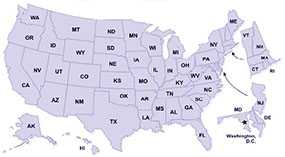Data & Statistics
Data sets, reports, and systems related to nutrition are provided.
Fruits and Vegetables
The State Indicator Report on Fruits and Vegetables, 2013 [PDF- 1.23MB]
This report provides national and state-level information on how many fruits and vegetables people are eating, and highlights key areas within communities and schools that can be improved to increase fruit and vegetable access, availability, and affordability.
The National Action Guide, 2013 [PDF-745KB]
 This guide summarizes the national data on fruit and vegetable consumption and policy and environmental supports. It also provides potential actions that government and business leaders, coalitions, community-based organizations, and professionals can take to support Americans' eating more fruits and vegetables, along with resources for taking action.
This guide summarizes the national data on fruit and vegetable consumption and policy and environmental supports. It also provides potential actions that government and business leaders, coalitions, community-based organizations, and professionals can take to support Americans' eating more fruits and vegetables, along with resources for taking action.
Data, Trends, and Maps.
This interactive tool provides state-by-state data on fruit and vegetable consumption including environmental and policy support for fruit and vegetable intake.
 Breastfeeding
Breastfeeding
Breastfeeding Report Card 2016
The CDC Breastfeeding Report Card brings together state-by-state information to help tell the story of breastfeeding practices and supports in states.
Breastfeeding Data and Statistics
This information includes U.S. National Immunization Survey, Breastfeeding Report Card, Infant Feeding Practices Survey II, Maternity Care Practices Survey and Health Styles Survey.
 Drinking Water Facts
Drinking Water Facts
This fact sheet gives information on the importance of increasing daily intake of plain drinking water. Data is also provided on plain water consumption by age, race/ethnicity, socioeconomic status, and behavioral characteristics.
 Added Sugars Facts
Added Sugars Facts
This fact sheet gives information on added sugars and tells why Americans should limit their intake. Examples of added sugars seen on ingredient labels are given and data on added sugars consumption is provided.
 Micronutrient Facts
Micronutrient Facts
This web site describes the importance of micronutrients, such as iron, iodine, vitamin A, folate, and zinc, in the diets of children and pregnant women. Deficiencies in these micronutrients can have devastating consequences. At least half of children worldwide ages 6 months to 5 years suffer from one or more micronutrient deficiency, and globally more than 2 billion people are affected.
 Related Resources
Related Resources
Data, Maps, and Trends
The Division of Nutrition, Physical Activity and Obesity’s Data, Trends and Maps is an interactive tool that provides state-specific data about obesity, nutrition, physical activity and breastfeeding. You can view statistics in a variety of formats, including maps, tables and trend lines. Explore Data, Trends and Maps.Obesity Data and Statistics
Includes the latest statistics on adult and childhood obesity in the United States.
- Page last reviewed: April 10, 2017
- Page last updated: April 10, 2017
- Content source:


 ShareCompartir
ShareCompartir